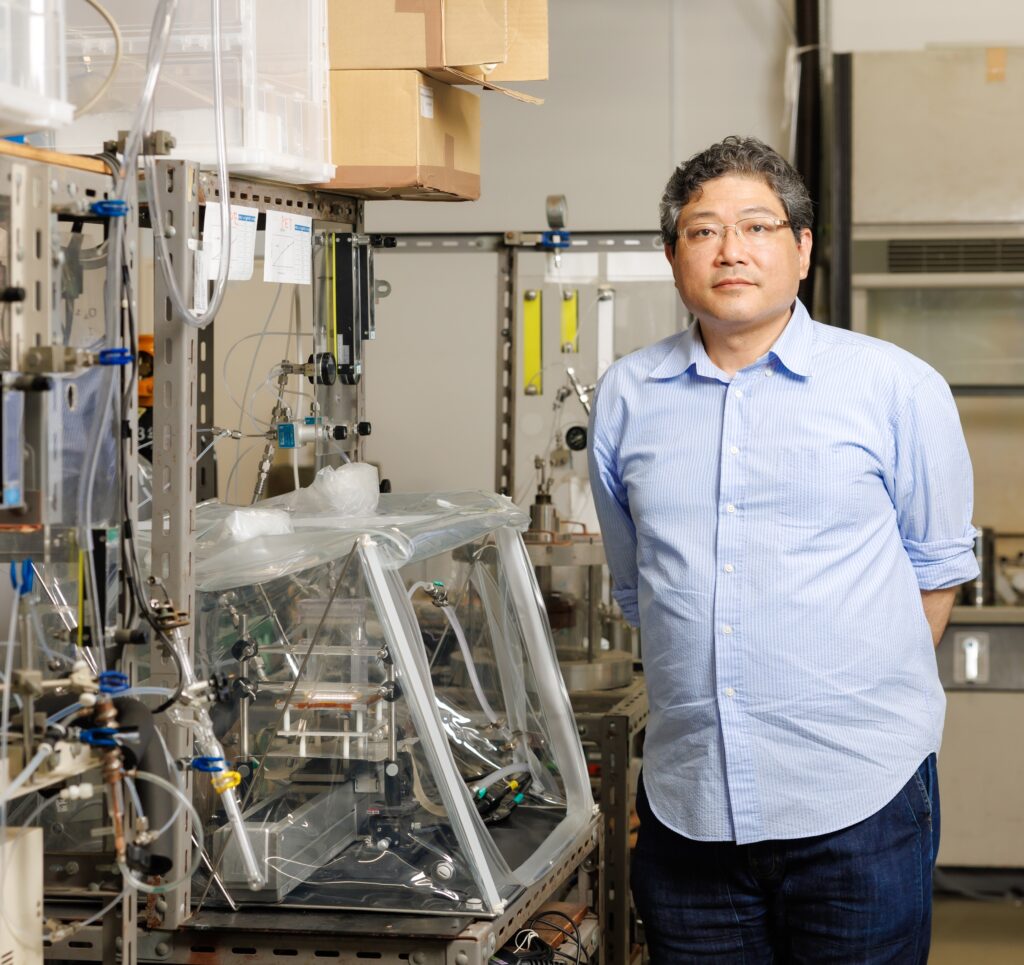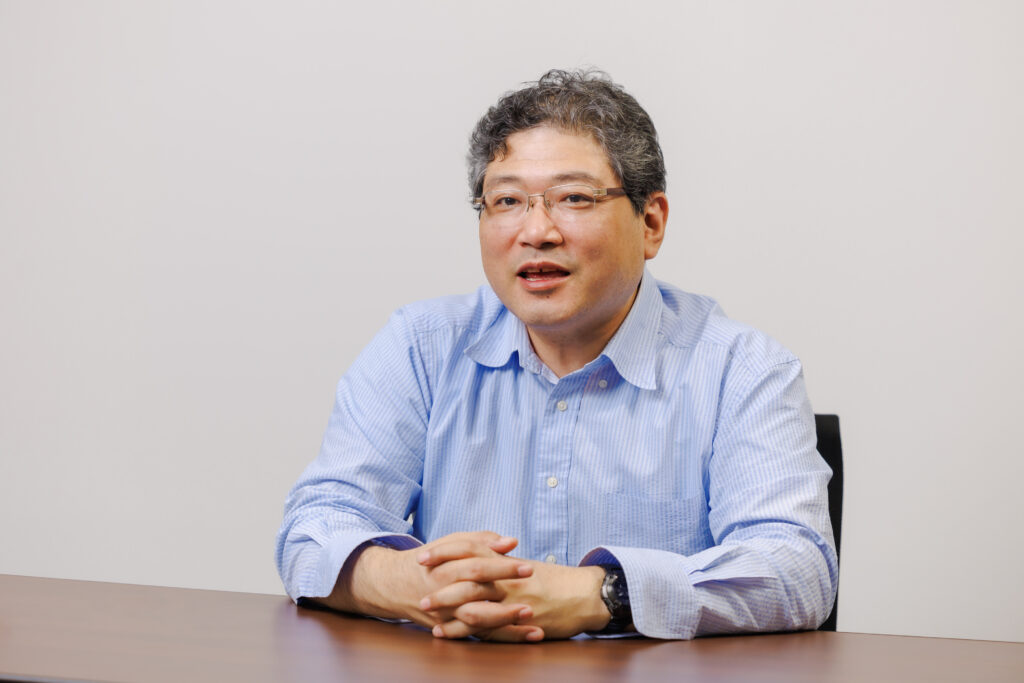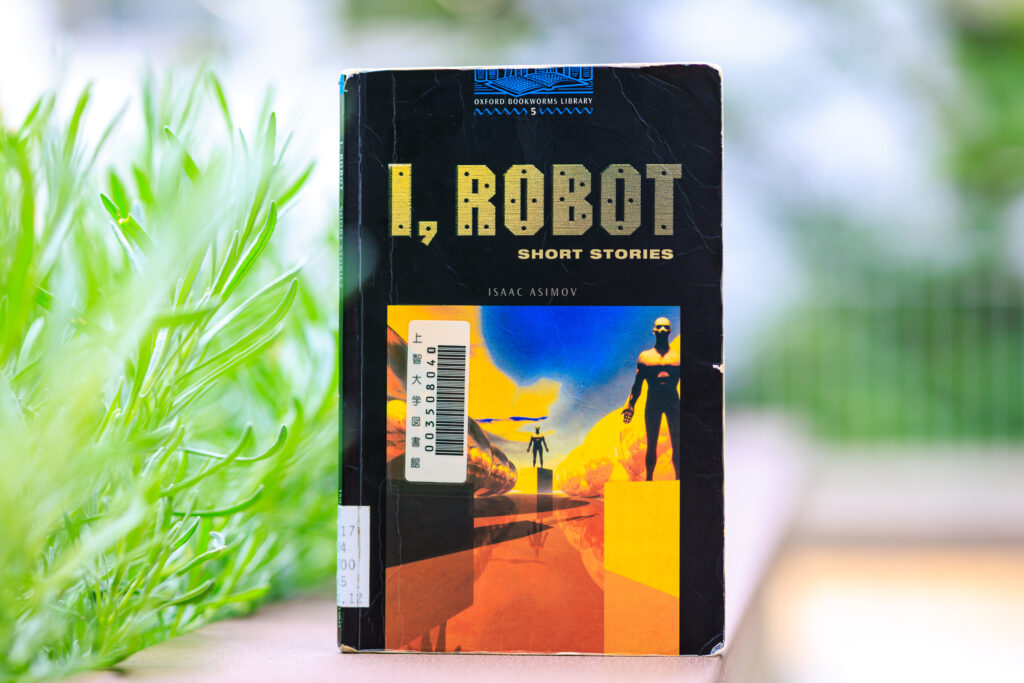
Associate professor Kunihito Tanaka from the Faculty of Science and Technology uses plasma—known for its luminescence phenomenon—to develop adhesion technology for materials that often resist conventional bonding methods. He talks about the appeal of addressing issues faced by companies and contributing to manufacturing’s final stages.
Applied chemistry addresses issues that surface in the final processes of manufacturing and plays the role of leading to implementation. Within this field, I focus on the development of adhesion technology using plasma.
When ice and other solids are heated they become liquids, and with further heating, they turn into gases. If even more energy is added in this state, some particles will ionize. Such a state containing ionized particles is known as plasma. It is also known as the fourth state of matter, following solid, liquid, and gas.
Developing methods for adhering fluorine resin

A familiar example of plasma is the neon signs that make use of its luminescence phenomenon. Made with neon pipes formed into letters and designs, they shine with a soft light in colors such as red and purple. Before LEDs became popular, these signs were widely used for store signboards and the like.
However, this is but a small part of plasma’s applications. Plasma has high reactivity and can change various properties when emitted at the surfaces of solids. This technology is also used in the production of integrated circuits and has become indispensable in the processing stages of products.
Plasma’s ability to change solids is also beneficial in adhesion technology. To make products, it is essential to have processes for adhering various materials with different properties. Therefore, special adhesives and materials that are easy to adhere are developed, but there are times when these alone are not enough. In such cases, there are more than a few cases in which using the effects of plasma allows proper adhesion.
One such example is the technology that I developed for adhering fluorine resins. While adhesion is possible using a type of highly reactive agent, it can blacken the surface and produce waste during the process. But with plasma, adhesion is possible without such issues, which is greatly appreciated by companies.
Acquire problem-solving skills through research
My research starts with companies asking me if a certain material can be adhered using plasma. Based on these consultations, I design plasma added with the necessary matter to achieve the desired reaction, then create a dedicated reaction apparatus. The target material is placed in the apparatus, plasma is emitted at the material, and experiments are repeated until success is achieved.
In undertaking research, I always adopt a “Let me be of help if I can” and “Please use my expertise to solve your problems” mindset when dealing with companies. Some problems seem difficult to find solutions for. However, I take on research without shying away, viewing the mission of research as working hard to meet these requests. Besides success, unexpected results also lead to joy and motivation.
While there are challenges that I could not overcome in the past, I to continue to face new one’s head on. I tell students at my laboratory, “There is no need to limit yourself to plasma. I hope you will acquire problem-solving skills through research.”
When you enter society, initially, your mentors and the people around you will teach you the solutions. Once you are put in a position of management, though, this will no longer be the case. At such times, having undertaken the series of research processes, from research planning to analyzing experiments and results, will become a useful resource. This is the message that I hope to convey.
The book I recommend
“I, Robot – Short Stories”
by Isaac Asimov, Oxford Bookworms Library

A well-known science fiction novel published in 1950, this book states the three laws of robotics to be observed by robots—one being the safety of human beings—almost as if it had foreseen the problems of modern AI. Besides being translated into Japanese, it has also been made into a movie, and I hope people will try reading this book.
-
Kunihito Tanaka
- Associate Professor
Department of Materials and Life Sciences
Faculty of Science and Technology
- Associate Professor
-
Graduated from the Department of Chemistry, Faculty of Science and Technology, Sophia University, and received his Ph.D. in Engineering after completing the doctoral program for Applied Chemistry at the university’s Graduate School of Science and Technology. Took on several positions—such as research assistant at Sophia University’s Faculty of Science and Technology—before assuming current position in 2011.
- Department of Materials and Life Sciences
Interviewed: July 2023